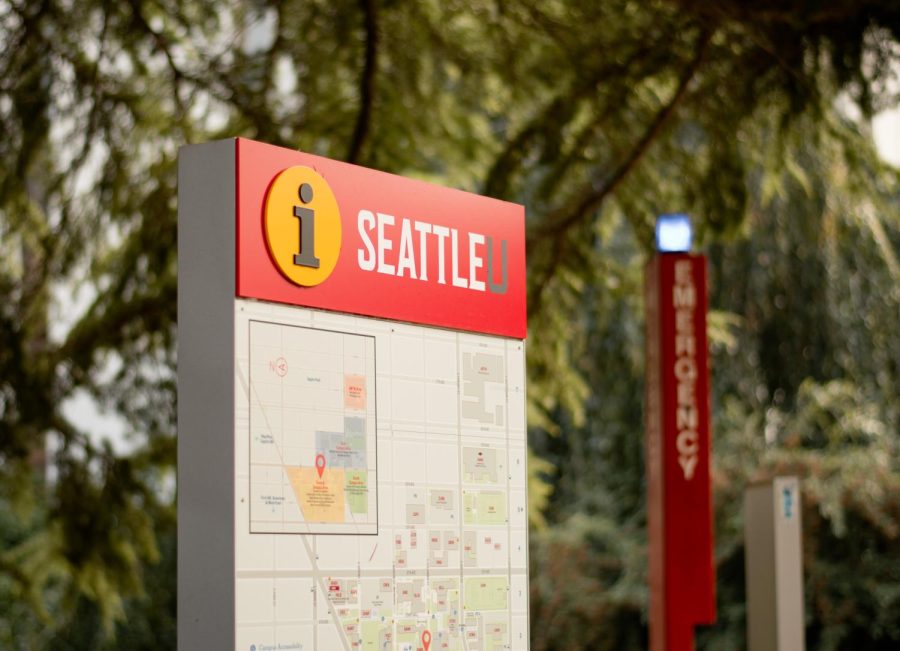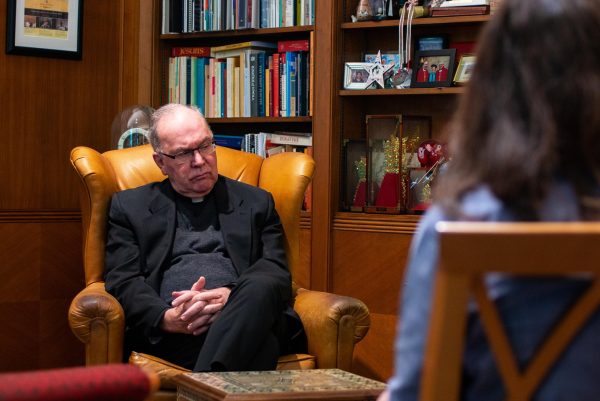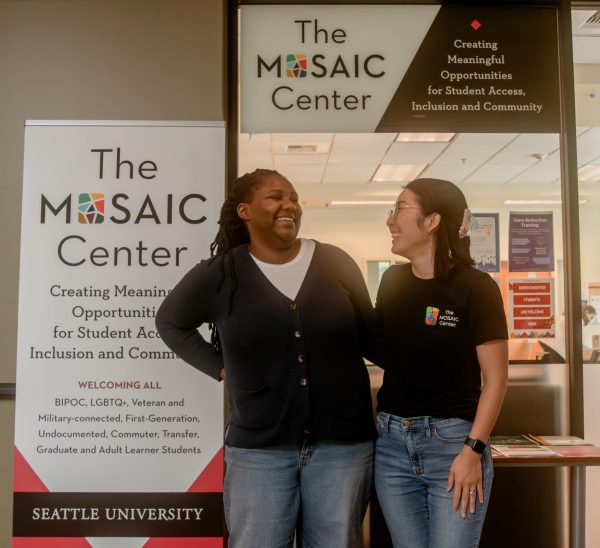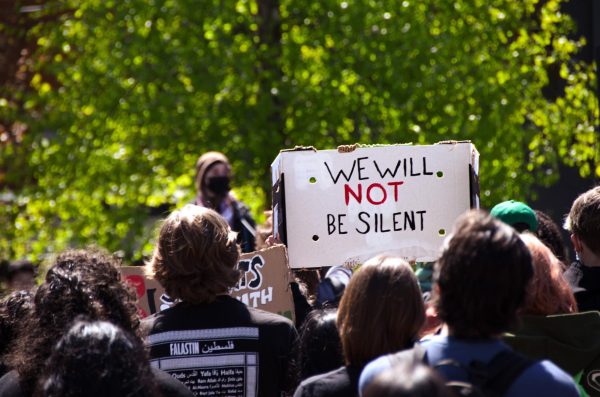Seattle University Wraps-up Fall Quarter and Looks Ahead to Winter
Seattle University information signage near emergency call box pillar.
It’s a tired, but true cliché: the COVID-19 pandemic challenged higher education. After over a year of online instruction, Seattle University returned to in-person classes in fall 2021, with a brief online period after Thanksgiving break. The shift back to in-person classes was an administrative challenge given the changes that took place. The university updated air filtration systems, finished the Sinegal Center and welcomed President Eduardo Peñalver to Seattle U.
Ten weeks in, administrators are happy with the first quarter back on campus and cautiously optimistic about the future.
There were only 52 recorded cases of COVID-19 on Seattle U’s campus from Oct. 1 to Nov. 30, likely due to the stringent vaccination and testing protocols enacted by the university. Provost Shane Martin attributes the university’s COVID-19 prevention to a strong group effort across the university.
“I think our campus responded incredibly well, especially when we compare our fall term to the situation at other universities. I’m very proud of our students, faculty and staff,” Martin said.
President Peñalver echoed Martin, and was grateful that one of the most immediate challenges of the quarter was handled successfully.
“We had very few cases on campus this quarter, and many of them were asymptomatic. I can take very little credit for any of that, since it was truly a community-wide effort,” Peñalver said in a written statement to The Spectator.
While the university avoided a flurry of COVID-19 cases, there were serious instructional and pedagogical challenges, which imposed new sources of stress on professors. The mix of in-person classes with an optional online component for those who did not feel well enough to attend class was a difficult balance for instructors who had to simultaneously teach in a physical and virtual classroom.
“It continued to be a challenge for our professors. They had to quickly learn how to teach completely online last year, and they did. They rose to that challenge. But this term, it wasn’t that professors were now going back to teaching completely in person, though we were primarily in-person,” Martin said. “We still had situations where students had symptoms or had been exposed to someone and couldn’t come to class, so faculty had to figure out ways to teach students who couldn’t be there in person.”
Second-year Anthropology major George Miller commented on his experience at Seattle U. As a student who virtually graduated from high school and began college via Zoom, he has relied on the Athletics Department for a sense of normalcy.
“It’s gone smoother than expected, although there have been some speed bumps because it varies from class to class. Some professors have been really understanding of how challenging the transition is, whereas others haven’t been,” Miller said. “I’ve been able to stay grounded because I play on the Men’s Tennis team, so I’ve had that consistency to turn to.”
Given the ongoing threat of COVID-19 infections, Martin anticipates that students and professors will continue working with the hybrid model in the near future.
COVID-19 was not only a health threat for Seattle U, it also posed a financial challenge. Chief Financial Officer and Vice President Wilson Garone believes the university has survived through the worst of its financial hardships as a result of the pandemic.
“We’re making progress. I’m not doing any victory laps at the moment because the financial repositioning is multi-year work that just started a couple years ago, but it’s moving in the right direction despite all of the challenges that came in our direction during COVID-19,” Garone said.
Garone forecasts a slight deficit in this year’s finances, but both the CFO and president agree that Seattle U is on the right long-term financial path.
“The university is financially stable. As evidence of that, I would point to the upgrade to our credit rating by the S&P from a negative to a stable outlook. Although we were helped through the worst of the pandemic by federal assistance, we still show a slight deficit in our operating budget that we need to resolve,” Peñalver said.
The university’s five-year strategic plan was published just before the pandemic shut down in-person instruction, meaning Seattle U was pushed off course from the goals established in the initial document. In addition, the 2020-2025 plan was published under President Stephen V. Sundborg, S.J., leaving the majority of the implementation to his successor.
Due to the inopportune timing of the initial strategic plan, the university launched a revision of the plan, which will span from 2022-2027. It will structure much of the work that Peñalver and Garone will undertake over the next five years.
“We have goals that came to many members of the leadership group from the new president as part of his key initiative Reigniting Strategic Directions. I have been laser-focused on the financial health of this university and the repositioning of the university, which I think we’ve been making solid multi-year progress on. That is the core of what I’m focused on,” Garone said.
Peñalver underscored the financial elements of his new strategic plan, specifically his goal to increase the efficiency of the university.
“Goal five of Reigniting Strategic Directions is all about how we can achieve our goals in the coming years by finding more efficient ways to do our work and by developing new sources of revenue. We have our work cut out for us, but we have great advantages as a university, and I am confident we can succeed on all these fronts,” Peñalver said.
The official version of the strategic directions document is not yet complete, but the draft will likely be finalized by January. The implementation effort will be a university-wide process involving administrators, staff and students.
“I envision that there will be a number of working groups that will be announced in January and in February, and opportunities for community members to be involved in various areas and ways of implementing those goals. We’ll also be presenting information on the timeline priority order for the various strategic initiatives, so it’s a very exciting time for the university,” Martin said.
While several administrative roles have already changed hands over the course of the pandemic, most notably the presidency, Housing Director and Honors Director positions, there are still several more to be filled in the coming months, which will have a significant role in implementing the new strategic plan.
“We are searching for some key administrative roles, including the Vice President for University Advancement and the Vice President for Human Resources and I’m hopeful that we will make good progress on filling those roles next quarter,” Peñalver said.
Filling these positions will be a main goal of the president during winter quarter, in addition to finalizing the strategic plan and meeting with community members. As the university prepares for another quarter, the financial stability of the university, finalization of a new forward strategy and the continued prevention of COVID-19 infections will continue to be the most pressing challenges for Seattle U.











